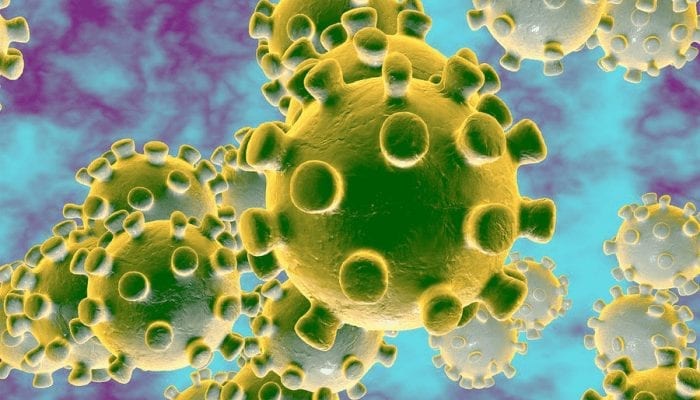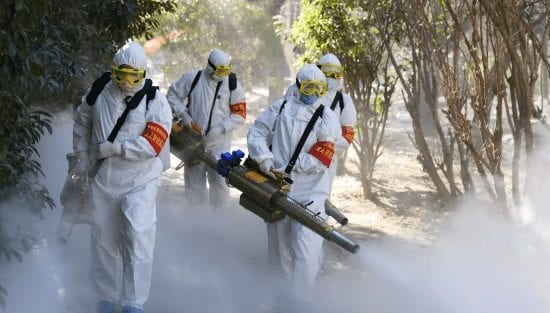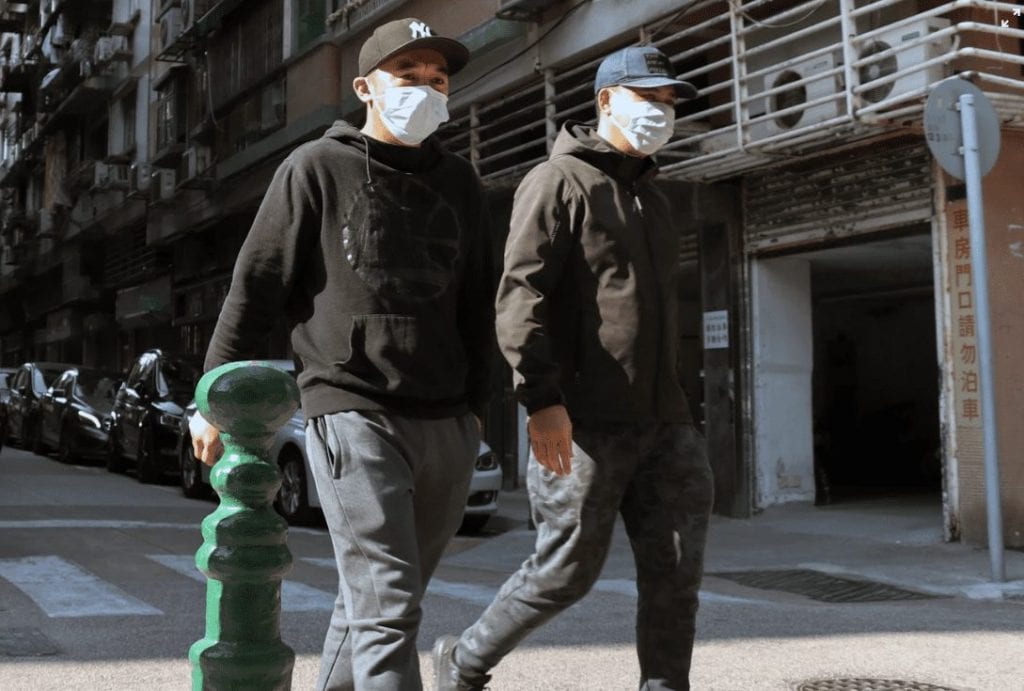Corona Virus: The Real-Life Impact and What’s Actually Going On
Coronavirus emerged from the city of Wuhan in China as a mysterious pneumonia-like disease. Due to its peculiar nature and rapid spread, it quickly raised an international alarm, with over 75,309 cases of infection recorded worldwide – the majority of them were in China.
It’s reported that as many as 2,014 people have already lost their battle with the infection, and the virus has been declared as “a public health emergency of international concern” by the World Health Organization.
In this article, we’ll tell you the important facts about this rampant virus, and the measures you should take to ensure your safety.

What is ‘Coronavirus’?
Coronaviruses are different strains of closely resembling viruses causing illnesses that range in severity from the common flu to deadly infections that can be life-threatening.

Previously, two strains of the virus were recognized as Severe Acute Respiratory Syndrome (SARS-CoV) and Middle East Respiratory Syndrome (MERS-CoV).
The most recent strain that’s causing an epidemic is the ‘novel coronavirus (nCoV)’, which appeared in December 2019 in China. The fatality rates of novel coronavirus are lower than SARS and MERS. The virus was first decoded by Scientist Leo Poon.
The Origin
In scientific terms, coronaviruses are ‘zoonotic’.

This means that the virus circulates in animals, and if these infected animals are consumed, the viruses can cause disease in humans. From past reports, we know that civet cats were the carriers of SARS, and camels of MERS.
There have been many speculations about the origin of the coronavirus, but nothing can be said for sure. Bats, Pangolins, Hedgehogs, and Snakes are suspected to be the main carriers. The fact that snakes and bat soup are some of the delicacies in the Wuhan market also makes this notion stronger.
Mode of Transmission
Coronavirus is transmitted the same way a common cold is.

This can be in the form of coughing, sneezing, touching, talking or even breathing around an infected person. It has a range of about 1-2 meters radius, and the virus can’t survive in the air.
People with weak immunity, such as those having an existing health condition are more vulnerable to catching the virus. The same is also true for young children and the elderly, as they also have a weaker immune system.
When Do Symptoms Appear?
The duration of time between your exposure to the virus and the onset of its signs and symptoms is known as the ‘incubation period’.
According to the most recent data, the incubation period of coronavirus is estimated to be between 2-14 days. During this time, the infected person can be completely asymptomatic, and it is not certain if the disease can be transmitted during this phase.
Initial Symptoms
There are five major symptoms of this disease to look out for:
- Fever – This is the first symptom of coronavirus. The temperature can be higher than 37.3C degrees, and it starts out as mild. As a precaution, there are certain devices at airports and railway stations now that monitor the body temperature of the passengers.
- Cough – This is a dry form of cough without any sputum or wheezing.
- Shortness of Breath – This can be an inevitable consequence of excessive coughing.
- Respiratory distress – This is a serious symptom of the disease, as it badly affects the lungs and can even cause it to shut down completely.
- Lethargy – Just like hay fever and the common cold, the body feels lethargic and fatigued, and it can also manifest itself as body/muscular pain, vertigo, nausea, and chills.
Life-Threatening Symptoms
Early detection and control of the disease are very important because if left unchecked, it can have life-threatening consequences.

Patients have reportedly gone in severe pneumonia, sepsis, acute respiratory distress syndrome and septic shock which ultimately leads to organ failure, causing death.
When Should You Get Tested?
Although the virus is mainly contained in China, there have been cases reported in many other countries within and outside Asia.
These include Japan, Singapore, South Korea, Hong Kong, Thailand, Malaysia, Taiwan, Germany, Vietnam, Australia, America, France, UK, Macao, UAE, Canada, Philippines, India, Italy, Iran, Spain, Russia, Egypt, Belgium, Finland, Cambodia, Sweden, Sri Lanka, and Nepal.

In recent but unconfirmed news, an infected person was also found in Pakistan. From this, we can say that you should get yourself tested as soon as any of the above symptoms appear.
You never know who is a carrier when you are traveling or out in a public place where known cases have been reported.
Laboratory Tests for Coronavirus
When it comes to testing and detection of the virus, doctors all around the globe are at high alert.

A lab test for SARS-CoV-2 or COVID-19 (both are referred to as viruses for the novel coronavirus) includes blood samples of the infected patient, and the doctors will guide you further on the procedure and which lab is currently performing these tests.
What about Treatments?
Currently, there’s no known medicine that can cure coronavirus.

Those with mild symptoms have benefited from following the same treatment as that of common cold, which includes resting and staying hydrated while managing the fever with Ibuprofen or Tylenol.
Patients with severe symptoms are admitted to the hospital, and the symptoms are managed and treated accordingly. The most important thing is quarantine at this stage. Preventing the spread of the disease is the only way to limit it as of now.
How Worrisome is the Situation, Really?
The virus has a significant death toll, which seems to be increasing since the virus first emerged in December.

Although the mortality rate is comparatively lower than MERS or SARS, it can still be compared to certain historic pandemics, such as the Spanish flu of 1918.
However, the global threat is limited as of now, the majority of cases are within China, and imported to other countries from China as well. Even for its spread in China, the numbers are comparatively small for a population of 1.4 billion people.
Is Coronavirus Seasonal?
Short answer – we don’t really know much yet about the patterns of the virus. As it was only discovered about two months ago, the pattern, peak season and behavior of the virus in spring and summer is yet to be discovered.

Most viruses that cause flu-like symptoms are seasonal, and so the cases of coronavirus are also expected to drop as the weather becomes warmer. But it’s still premature to say anything with certainty. Therefore the aggressive precautionary measures suggest that although there’s hope, no one should count on it.
Quarantine in Wuhan
Wuhan is the main hub of the virus. From travel restrictions to a new hospital, China has risen to the occasion and took all the necessary measures to limit the spread of the infection.

The cities of Wuhan, Shiyan, Xiaogan and Huanggang are completely sealed off from other residential communities and complex. They have also banned all non-essential vehicles in local roadways. The residents in these cities get provision/daily necessities from the neighborhood as they aren’t allowed to leave their homes.
Visiting Affected Areas
When it comes to preventive measures and limiting your chances of being infected, the most important factor is the demographic location.
If you are living in or visiting a region that has confirmed cases of coronavirus, you should avoid being in close contact with people at the airport, especially those who appear to have a cough or other flu-like symptoms. ‘
Avoid eating ‘exotic cuisines’ or visiting markets that sell meat. Also make sure that you cover your mouth, as the respiratory tract is the main point of attack by the virus. Wearing a mask to cover the nose and mouth has proved to be quite effective when traveling.
Maintaining Good Hygiene
Well, this shouldn’t just be limited to the threat of coronavirus. Maintaining good hygiene is imperative to overall wellbeing.

This not only includes your body but also what you eat. Food hygiene, properly cooked and prepared meat that’s safe and healthy for you, and preferably organic is also important in the current circumstances.
It’s advisable to use an alcohol-based disinfectant to keep the hands clean.
Effectiveness of Influenza Vaccine on Coronavirus
There have been some speculations that people who have had the seasonal influenza vaccine are also safe from coronavirus.

This is not true, as the vaccine for influenza is ineffective against the novel coronavirus, and the people who have taken the shot are still susceptible to the disease. However, it can reinforce your immunity against flu and the early symptoms, but this can’t be taken in any way as protection from the coronavirus itself.
Traveling to Asian Countries
As mentioned above, the majority of the cases are limited to China, and the Asian countries that have had confirmed cases of coronavirus are controlled, therefore the probability of being infected in Asian countries other than China is quite low.
WHO doesn’t advise against traveling to Asia, as long as all the preventive measures are being followed.
How Effective is Screening?
Some evidence of reported cases in other countries suggests that screening people at the airport might not be the most effective way of ruling out the infected.

This is because coronavirus can present itself in milder forms, and carriers can be completely asymptomatic at the time of arrival. In such cases, detection of the infection is impossible, and it can spread at a later time.
Therefore, the best way to control its spread is awareness of the passengers about developing symptoms, and the necessary measure they should take after their arrival.
Mortality Rate
Around 20% of the infected people have become severe, and about 3% of them contracted pneumonia in Hubei and died.

The mortality rates for the rest of the world are as low as 0.3%. Those at high risk are patients with chronic pulmonary diseases like COPD or asthma, as well as other systemic diseases that weaken immunity.
Is it a Pandemic?
Pandemic is a situation when an infection outbreak becomes a worldwide epidemic. From previous experience with two strains of coronavirus – SARS, and MERS, we can say that none of them became pandemics, but novel coronavirus is different from them.

WHO recently tagged it as ‘PHEIC’ – Public health emergency of international concern. By doing so, it has alerted professionals from all around the world to identify the outbreaks and work towards its treatment. For now, it is not a pandemic as its spread is very controlled, and China has taken all the necessary steps to ensure its containment.
Economic Changes
According to the recent reports, China and Hong Kong are struggling with plunging stocks that have a massive impact on entertainment, travel and hospitality sectors.

Several modes of transportation and public places have been shut off in China to prevent the spread of coronavirus, and the import of several food products – especially those of meat items, has also plummeted. The most important bank of Hong Kong – HSBC, has planned to cut 35,000 jobs due to the economic fallout.
The Ill-fated Diamond Princess
Diamond Princess is a cruise ship that started its voyage with 2,666 passengers on board from Yokohama in Japan, and somehow became the core of a global epidemic.

The two-week trip set out to tour China, Vietnam, and Taiwan on the 20th of January but ended up in a long quarantine when 542 passengers tested positive for novel coronavirus.
Out of all the global cases of coronavirus, more than half of them were reported at Diamond Princess. While this quarantine ended on 19th Feb, most of the passengers will face further isolation in their home countries.
Cases in Asia
After China, the majority of the cases were reported in Singapore. A total number of 84 cases have been confirmed until now. The second country to have high cases of infection in Japan (excluding the passengers on Diamond Princess).

With 73 cases in total, most of the infected are showing milder forms of the disease and are quarantined. The first death was reported on 13th February of an 80-year-old patient.
There are 51 confirmed cases in South Korea, 35 in Thailand, 22 in Taiwan and Malaysia, 16 in Vietnam, 9 in UAE and a few in Egypt, India, Nepal, and Sri Lanka with no reported deaths. In Tehran, Iran, two elderly patients have passed away after testing positive for the virus.
Cases in U.S
As of now, there are 15 confirmed cases of the novel coronavirus in America. The patients are spread across the states of Texas, Washington, Wisconsin, Arizona, Illinois, California, and Massachusetts.

None of the cases have proven to be fatal, but reportedly an American citizen died in Wuhan. There are 420 people currently under investigation, out of which 347 have tested negative for the infection.
Cases in Europe
The first death by coronavirus was reported in France, but it was an 80-year-old Chinese tourist and not a local.

Since then, there are a total of 12 confirmed cases in France, out of which five are British nationals, who claim to have shared a chalet with a traveler from Singapore while staying at a French ski resort.
France was also the very first country of Europe to report a case of the virus. Germany, Italy, Spain, Finland, and Belgium have a small number of cases, with no deaths reported.
Cases in the UK
The UK has a total number of 9 confirmed cases of the virus.

All of these cases are in England, the latest one being reported from London. Out of these, 8 people have now tested negatively for the virus after two comprehensive tests.
Cases in Australia
Australia has reported 15 cases of infected people, out of whom 8 have successfully recovered from the virus.
Most of these patients were passengers arriving from Wuhan, or the Hubei province. The Australian government has taken all the necessary measures to control the spread and there have been no fatal cases.
The Curious Case of Hand Dryers
Recently, a rumor circulating for the prevention of the new coronavirus states that hand dryers effectively kill the infection.

This is a myth, and hand dryers have absolutely no effect in killing the coronavirus. It is advised to clean your hands frequently for a duration of 20 seconds or more with soap or an alcohol-based hand rub.
UV Lamp Sterilization
Another myth surrounding the virus states that UV lamps can be used to sterilize the hands.

These disinfection lamps are not only completely ineffective against the virus, but they can also irritate the skin of the hand and cause more problems rather than cure.
Effectiveness of Thermal Scanners
Thermal scanners are being used widely to detect the presence of the virus in travelers. However, it should be noted that thermal scanners can only do as much as detect a fever, not the virus itself.

Besides, there is a possibility for the carrier to not have a fever at all. So we can say that although it is a preventive measure that may or may not catch an early symptom of the disease, it is definitely not the most effective tool in confirming the presence of infection in a carrier.
Is Receiving a Post or Package from China Safe?
Another big concern revolving around the spread of coronavirus is receiving mail and packages from China.
It is completely safe to receive packages as they can’t possibly contain the virus. The main host of the virus is an animal and then humans.
The virus cannot survive in the air or on objects detached from these two main hosts. Therefore, letters and packages are not the carriers of coronavirus – as long as there isn’t anything edible in the package.
Can Pets be Carriers?
Although animals are the primary host of the virus, not all of them carry the disease.

Most common pets such as cats and dogs probably don’t carry the virus, as there’s no evidence of it as of now. However, it is still advisable to clean your hands immediately after petting an animal or being in contact with fur/droppings/or any direct contact with pets.
Antibiotics Effect
Antibiotics have no effect against the virus itself, but it can help in limiting the symptoms such as cough and fever to some extent.

Many hospitals with patients testing positive for coronavirus do administer certain antibiotics, as the body’s immunity is low and there are chances of being co-infected with bacterial infection as well.
Are Medical Masks Mandatory?
No, for asymptomatic individuals, and people who are not in close proximity with infected people or regions are not required to wear a medical mask.

Only symptomatic people are encouraged to do so, as the overuse of masks can lead to a shortage of stocks for those who do actually need them.
It is not a trend to put on a mask, regardless of what social media suggests!
Are All Patients with Coronavirus Admitted?
Hospitals are for serious cases with respiratory distress and gastrointestinal symptoms that can lead to dehydration and electrolyte imbalance.

For mild cases, hospitalization is not required – but quarantine and control are important. This is an individual’s responsibility to detect the early symptoms and get a proper check-up to avoid any problems or spread of the infection.
Mildly symptomatic patients have advised the same care as for common cold and strictly instructed to stay at home until the symptoms subside completely.
Closed Cases
Out of the 58,169 active cases of coronavirus, 79% of patients have a mild form of the disease.

17,140 cases have been closed with a 88% success rate of patients being discharged after full recovery. Currently, there are 21% cases (12,056 to be exact) with a serious condition.
